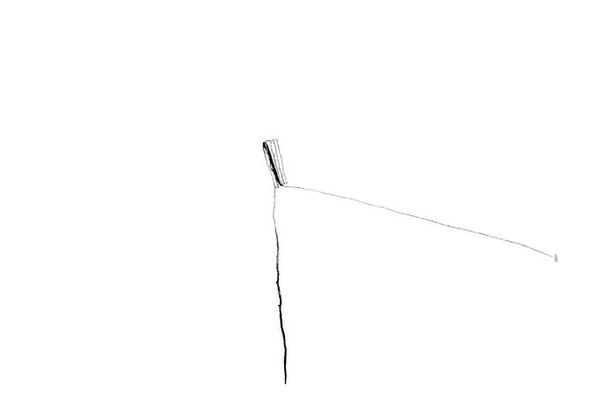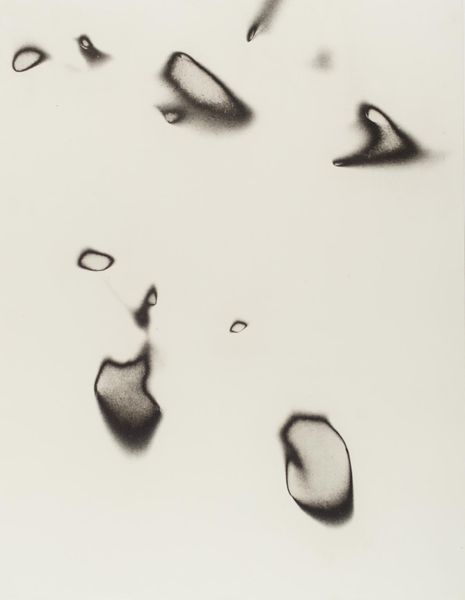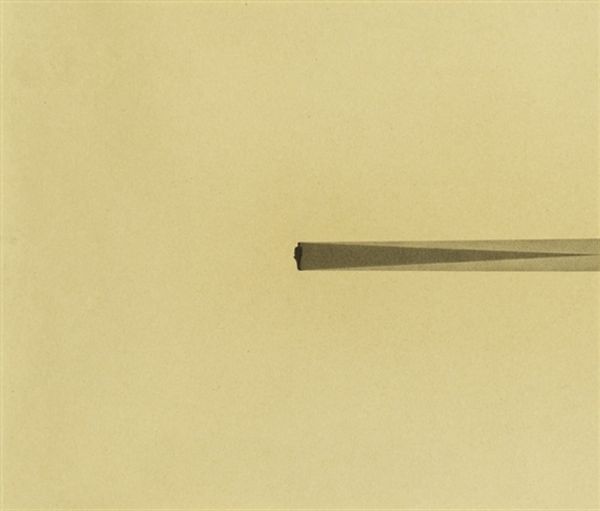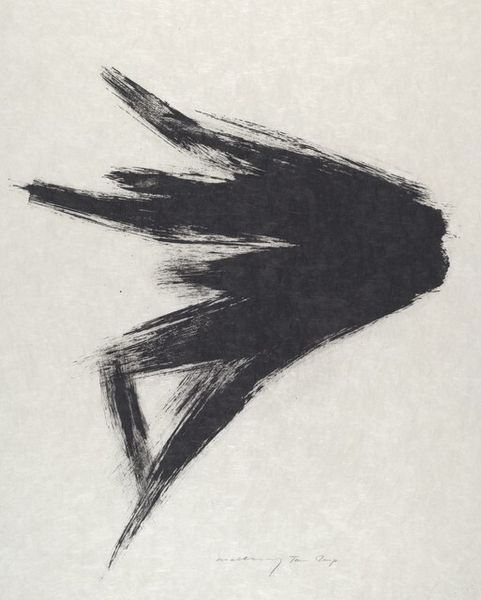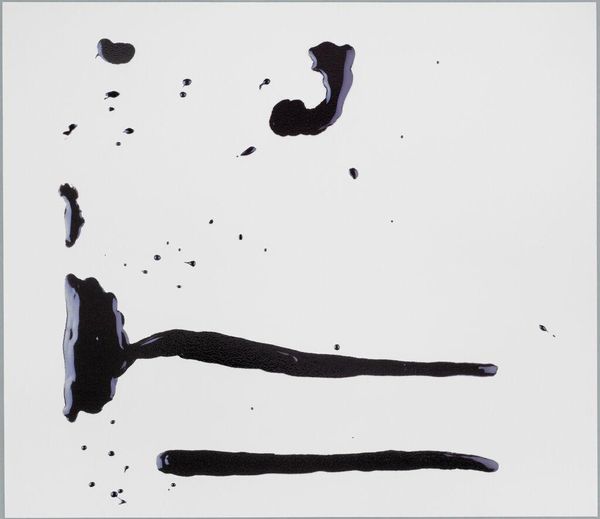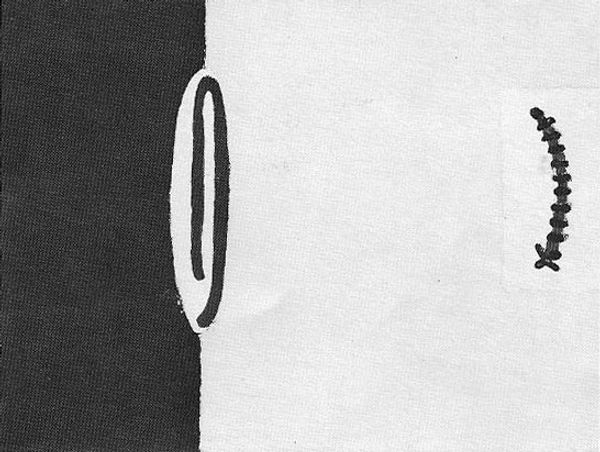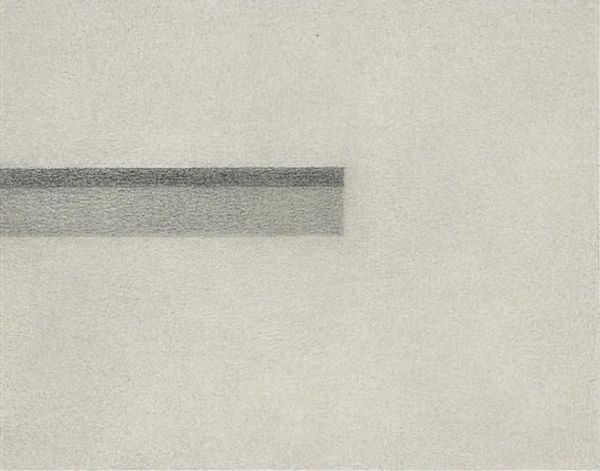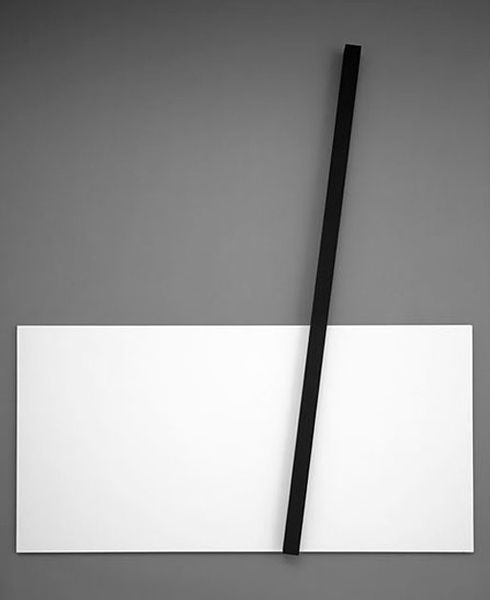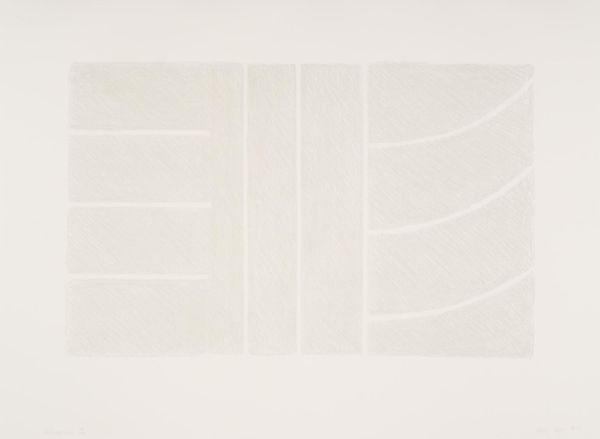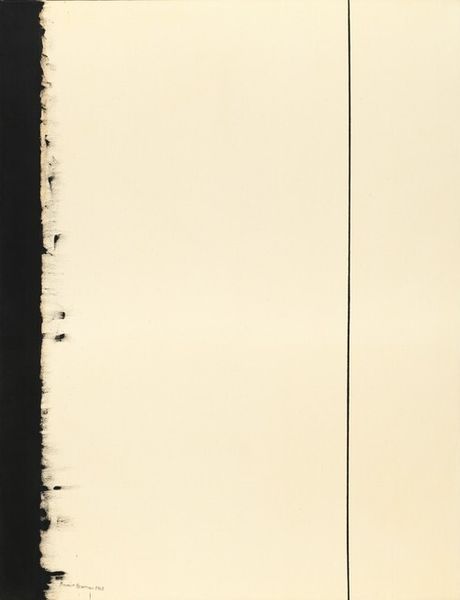
photography
#
photography
#
black and white
#
abstraction
#
line
#
modernism
Dimensions: sheet (trimmed to image): 8.3 x 11.1 cm (3 1/4 x 4 3/8 in.) support: 8.8 x 11.6 cm (3 7/16 x 4 9/16 in.)
Copyright: National Gallery of Art: CC0 1.0
Curator: "Eleanor, Chicago," a photograph Harry Callahan made around 1949. It’s a small, gelatin silver print, dominated by high-contrast light and shadow. Editor: My first impression? That darkness could almost be eating away at something…a slow-motion unraveling. What is it, really? Curator: On its most basic level, it's an intimate photograph of Callahan's wife, Eleanor. Though what we are viewing is just her belly as she leans over, with the rest cropped out of the shot. It's abstracted to the point of nearly unrecognizability. Editor: Interesting, I see the potential in the visual reading for female shapes with this info, there's something primal in those lines…the curve certainly feels like an archetypal symbol of womanhood turned into land art. The shape’s both yielding and self-contained; a yin energy to the stark, geometric yang of the frame's edge. Do you think that Callahan felt these qualities when he took it, or are we ascribing those themes retroactively? Curator: That's hard to say with certainty, as with any artist looking back through history and ascribing intent gets a little fraught. But Callahan always claimed a strong intuitive element to his photography. And I do find the negative space particularly potent, evoking the vulnerability and power in one's own skin. Callahan photographed Eleanor extensively—almost obsessively—throughout their marriage. Editor: Like the original selfie then, not just recording an image but shaping his own image within their relationship, that's devotion if you are still snapping after decades together. What feelings does it invoke in you, how does your emotional lens perceive its narrative qualities? Curator: You know, it's serene despite the drama of the light. He distills his most recognizable topic, his muse if you will, down to almost a pure, formal exercise of shadow and curves. I love the courage to present something so vulnerable and decontextualize it with geometric severity. Editor: In that respect it’s an incredible union between abstraction and representation; each augments the other. One reads her form into those shades, almost by way of compulsion, as the curve would have less power otherwise. And you see past that into pure shapes! It’s as if Callahan found himself right in the center, making both readings as intended by his heart’s mind at that precise second that created that first copy.
Comments
No comments
Be the first to comment and join the conversation on the ultimate creative platform.

